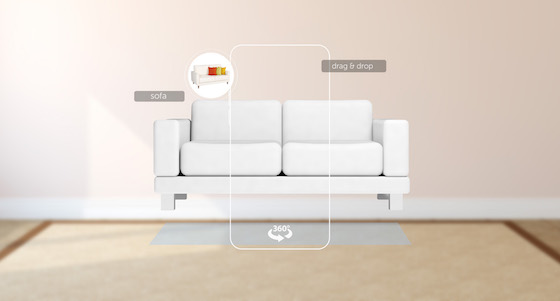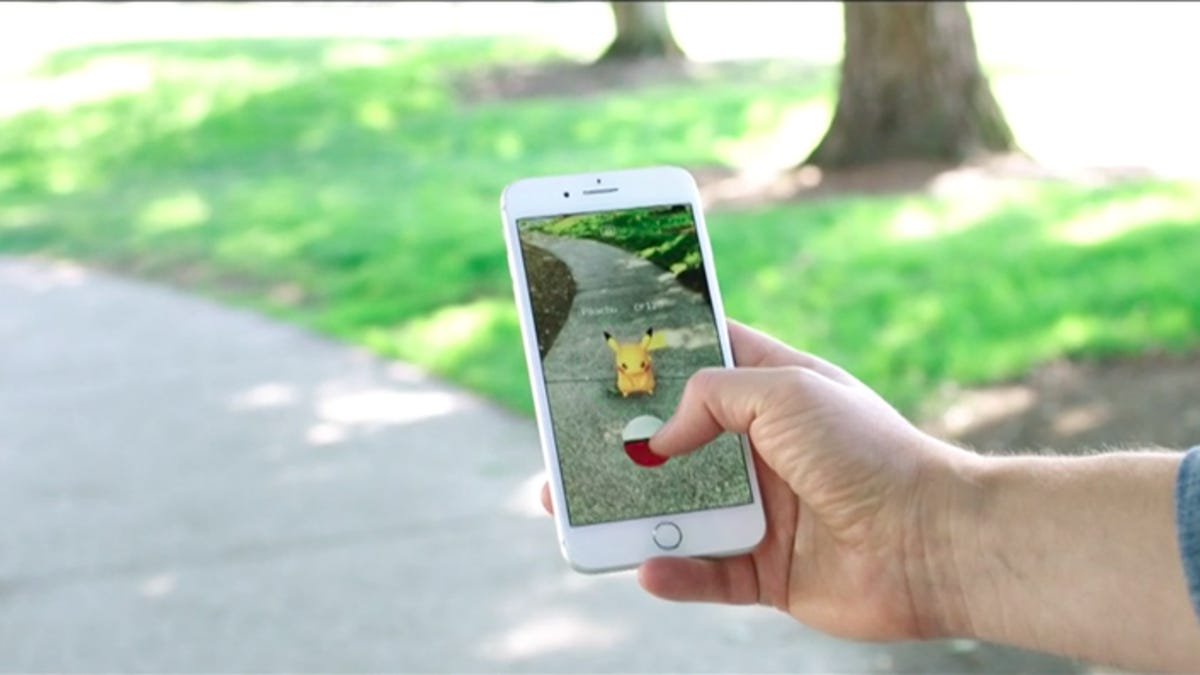
The world of Augmented Reality has opened up new doors. It’s time we walk in.
Do you remember the time when all of us were going bonkers over Pokemon Go and Ingress? Back in those days, the general public weren’t really familiar with the technology of Augmented Reality. Though AR has been around for a while, this technology is the new kingpin for all the cutting-edge devices and technological platforms that want to enhance visual experiences.
Although the beginnings of Augmented Reality date back to as early as 1968, AR is relatively a new concept for the mass audience as it adds digital elements to our phones. Unlike virtual reality, AR alters our reality by adding 3D objects, videos, sounds, graphics, and a lot more. It goes without saying that AR technology is very much capable of expanding the horizons of our physical world by leveraging powerful digital projections.
What Defines Augmented Reality?
The rapidly developing AR technology adds digital details to our physical world. With this technology, we can see the added layer of information to real-world objects. Unlike virtual reality, AR does not constitute creating an entire ecosystem; however, Augmented Reality makes the existing real world more informative and interactive.
One of the other exciting examples of AR is 3D navigation maps. The whole destination is projected on our smartphones in a 3D and interactive digital way which makes it look interesting and realistic and hence, it makes it easier for us to reach our destination.
What is the Difference between AR and VR? (AR vs VR)
For the layman, AR and VR can be quite confusing at first as they both deal with visual experiences. These two technologies are somewhat similar, but they are quite different from each other.
On the one hand, VR creates an entirely new universe using computer technology. It makes you believe that you are in a new world when you shut out the real world. On the other hand, Augmented Reality takes up a notch of our experience of the real world. We remain in the same world, but we see additional objects and elements on display that we can interact with.
Technologies involved in Augmented Reality
Augmented Reality overlays digital information in the real world with the help of a couple of technologies. These technologies are —
Depth-Sensing Camera

Registration Tools
Tools like motion sensors and accelerometers help to define the space where it would further superimpose or place the sensory objects or information that is to be around the AR user.
Computer Vision
A camera takes the picture from the outside world for interpretation and reference using an ML (Machine Learning) algorithm. This algorithm combines all bits and pieces of information to add a creative and personal touch and they make sure that it gives the user an immersive and believable AR experience.
Output Device
This is the device where the users can see the resultant picture or videos, such as your mobile phone, laptop, or computer monitor.
What are the Types of AR?
AR is not just limited to one kind of execution. There are a lot of ways to execute Augmented Reality. Some of those are –
Marker-Based AR

This type of AR requires a visual marker or a definite image that the camera identifies and processes to send out information about the said item. This marker is usually a QR code or an artwork or a logo.
This kind of technology is prevalent as it is inexpensive and easy to implement. That said, it requires us to download a certain app that would recognise the specific pattern. Take GooglePay or PhonePe for example, the app recognises the QR code in seconds and allows us to pay directly from our bank account.
Markerless AR

As the term itself says, this type of AR does not require any visual markers for the camera to augment that object into a physical space. Instead, it helps us to move physical and stationary objects. Markerless AR is the best for apps that do not need an “anchor” to the real world. The camera will simply track the fingertips and display the image.
Projector-based AR
This type of AR uses advanced projection technology and it further helps to simplify the complex manual tasks that are a significant part of manufacturing, assembling, training, and sequencing operations.
One of the examples of this type of AR is light guide systems. Instead of following a step-by-step guide, lights indicate each step to be used.
How does AR Work?
Well, it is no breaking news that AR can be applied in a variety of ways – you can either use it to make your friend look like a dog or navigate your way through.
Augmented Reality allows us to virtually try on glasses and see how they’d look on our faces. Does the brand Lenskart ring any bells?
Here’s how AR works –
- Take a camera-equipped device and when we put it into an object, the software will recognize it through technology, which, in turn, will analyze the video stream.
- To show the relevant content, AR uses computer vision along with simultaneous localization, depth tracking, mapping, and sensor data. It helps the camera to collect, send, and process data to project the relevant content.
- The device will then download the information from the cloud exactly like how a web browser loads a page via URL.
- While AR information is presented in a 3D ‘experience’ superimposed on the object instead of on a 2D page on a screen.
Augmented Reality provides a view of the real-time data flowing from products and it allows us to control with a touchscreen, voice, or gesture.
One of the examples is soccer gamer. The app recognizes a person’s foot and it sets a virtual footprint on the actual foot and its motion. It then allows us to kick the virtual soccer ball down the alley on screen. With the function of object rejection, the user’s foot is detected and it allows the program to recognize the players and offer a new game for another user respectively.
Uses of Augmented Reality
While AR has been around for several decades, businesses are yet to exploit its full potential. But with each day, the potential is changing every day and more and more apps are created and launched.
A few uses of AR are:
Public Safety and Security
Augmented Reality helps us to find critical information during emergencies. Law enforcement agencies around the world use “staged crises” to train their people. With these software programs, recruits can encounter the physical stimuli of danger without ever leaving the room.
Gaming and Entertainment

Remember Pokemon Go? The game was such a great hit that the game became a proof of concept of how useful AR is when applied and used in mobile games. We can expect more AR games to emerge in the future.
Education
AR is a potential game-charge in the field of education. A classroom can be enhanced with AR. Even the medical and healthcare fields are developing training apps that cover a range of skill sets from operating medical equipment to performing surgery with the help of AR.
Travel and Tourism
Travel and Tourism can benefit a lot from Augmented Reality. For example, The Hub Hotel from Premier Inn, a British resort, made augmented reality compatible with the wall maps it places in hotel rooms. When viewed through a smartphone or tablet, the wall maps include extra information about some of the local places of interest, serving as a kind of tourist information tool.
Equipment Maintenance
If Augmented Reality can help us to learn how to perform surgery on a human patient, then it can definitely teach us how to fix a toaster or a tractor or basically any machine or appliance that needs maintenance or repair.
Enhance Customer Experience
AR is one of the most powerful tools for retail as it allows the customers to see a 3D image of the product in their environment, evaluate its appearance in full size, try on the object, and more. The buyer does not need to install additional software as everything is available on the smartphone itself. Medical Treatment
AR can help us to make the training of the medical staff interactive. It will make the process of onboarding new equipment faster and more comfortable.
AR apps can also be used for treatments. For example, scientists have proven the effectiveness of AR applications can treat phobias.
Medical Treatment
AR can help us to make the training of the medical staff interactive. It will make the process of onboarding new equipment faster and more comfortable. AR apps can also be used for treatments. Combining robotic-assisted surgery with AR offers an advanced interface which will enhance user perception. The ability of AR to improve situational awareness will tremendously advance the surgeon’s ability to make better decisions, in real-time.
Design & Visualisation
One of the major functions of AR is to intervene with the natural environment and add life-like and virtual elements. It is effective to demonstrate future results in interior design, retail, machine, or construction.
Summing Up
With all of the innovation that we have done in the field of Augmented Reality, it still feels like we’ve only seen the tip of the iceberg. It is safe to say that we will experience more breathtaking and innovative applications that will make our lives more enjoyable and more productive.

This is good stuff!